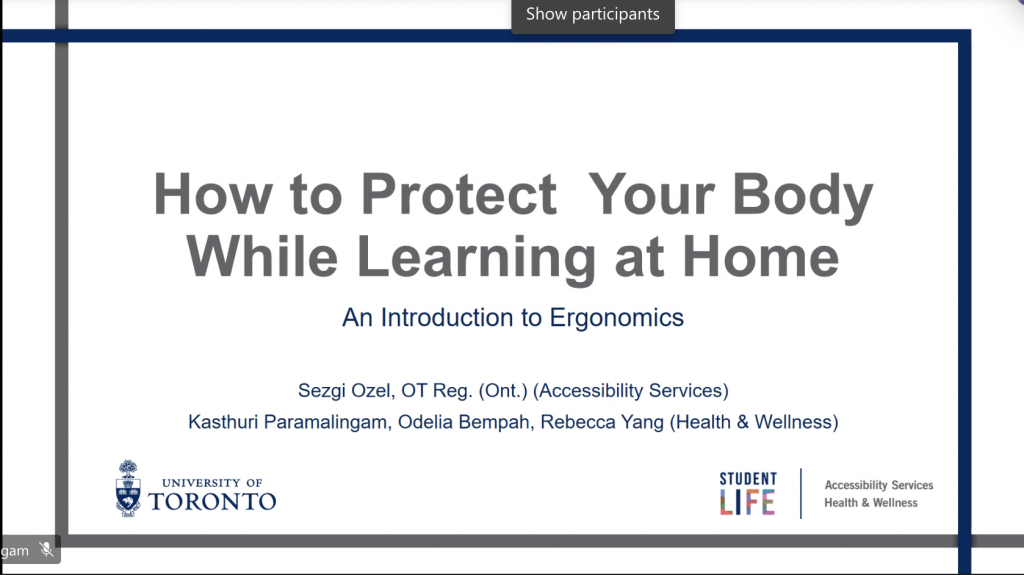
Wednesday, June 9, I attended an Accessibility and Health and Wellness workshop on ergonomics, or creating a healthy, safe working space. Ergonomics aims to "increase efficiency and productivity and reduce discomfort". While I don't suffer from back or neck pain, however, it is important to prevent pain and discomfort.
After watching the presentation, I decided to adapt my workspace to a more conducive work area. Here's how:
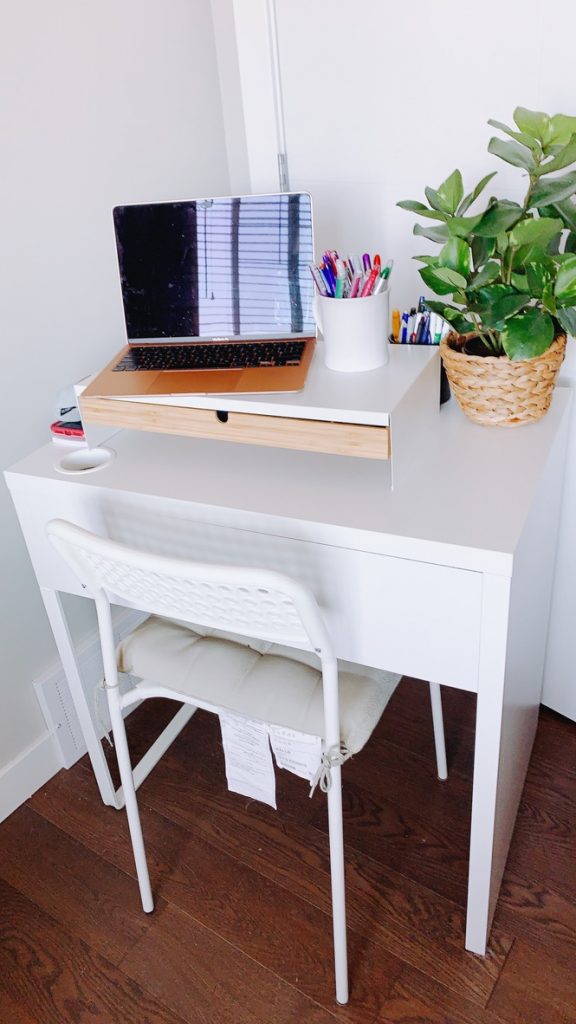
1. Create Time For Movement
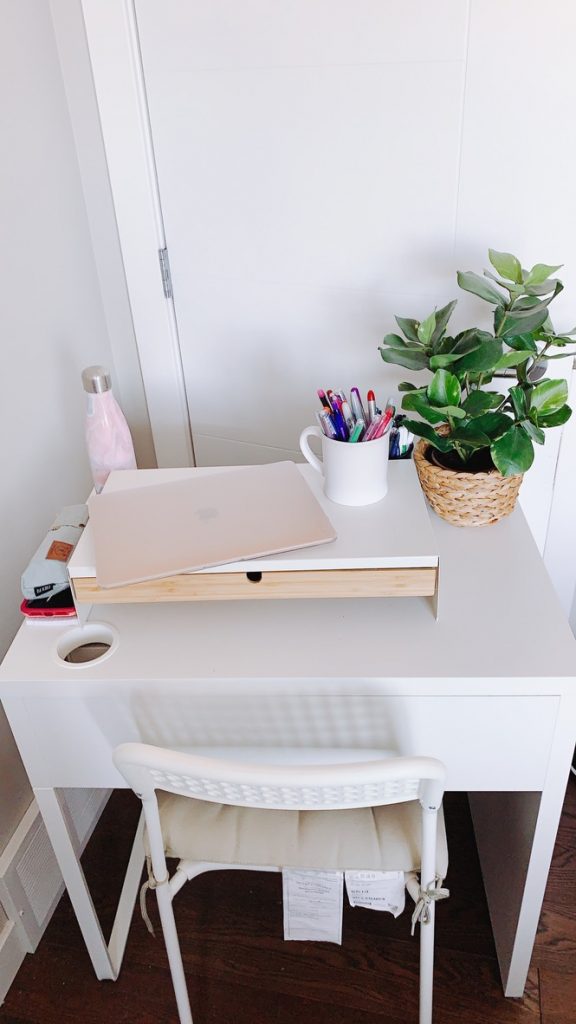
Text neck, for example, is a repetitive stress injury that occurs when your neck is constantly flexed down when looking at your cellphone (or any electronic device). This conditioned is caused by spending time being sedentary, using cellphones or looking at screens too long.
The more I move, the better my body feels. Being more physically active and incorporating movement into my daily life is preferable and helps develop painful conditions.
Every two hours, I've begun to make time for a short 15-minute walk. Since one of my classes are scheduled directly after the other, this means that I have time to break up my work day into bursts of movement.
Next semester I will be having classes directly after one another. In this case, I plan to go for a short walk or movement sessions into 5 minute bursts during the time in between.
2. Prevent Vision Fatigue By Using Ample Lighting & Preventing Glare
Using a big computer screen is often the ideal way to prevent pain. However, it's often unrealistic for every student to go out and buy a new computer screen.
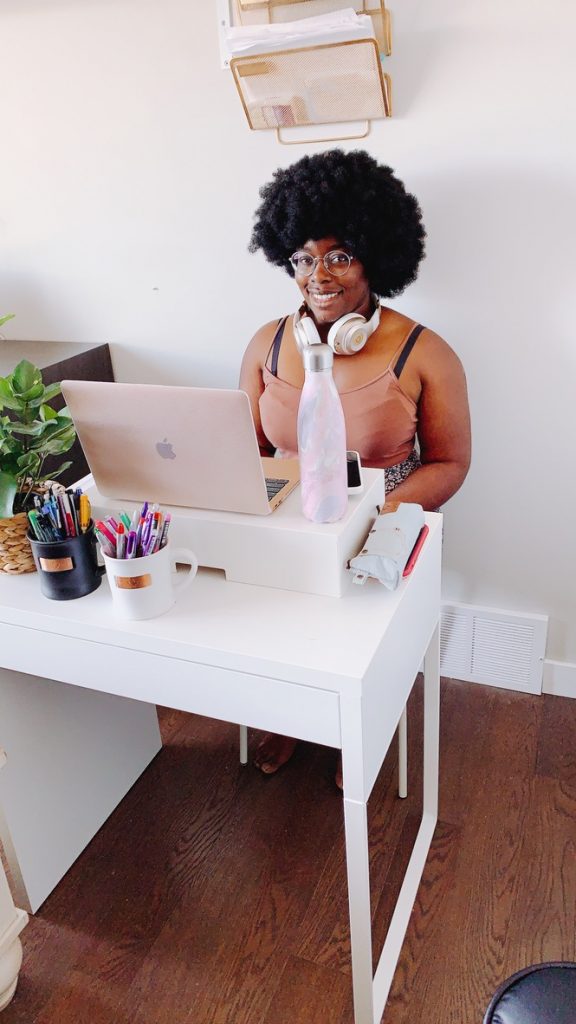
That said, at the workshop, I learned that you can create a better workplace simply by positioning your laptop at eye level, which prevents neck bending and helps avoid placing unnecessary weight on the neck.
Likewise, I learned about the importance of going for an optometry vision check and working in well-lit rooms is a great place to start.
According to registered occupational therapist, Sezgi Ozel, the best lighting comes from above or the side––not from the front or behind, which often causes glare and strains the eyes.
3. Adjust My Seating
Say "I" if you're guilty of slouching while sitting. It just feels so much better to slouch. It is not, however, good for your back. To prevent ending up with an injury in your lower or upper back (or shooting muscle pain), it's best to keep a 90-90-90 position.
By keeping 90 degree bend in elbows, knees and hips, keeping my spine upright and relaxing my shoulders, I can keep my back well-supported and strengthen the muscles that hold up my body.
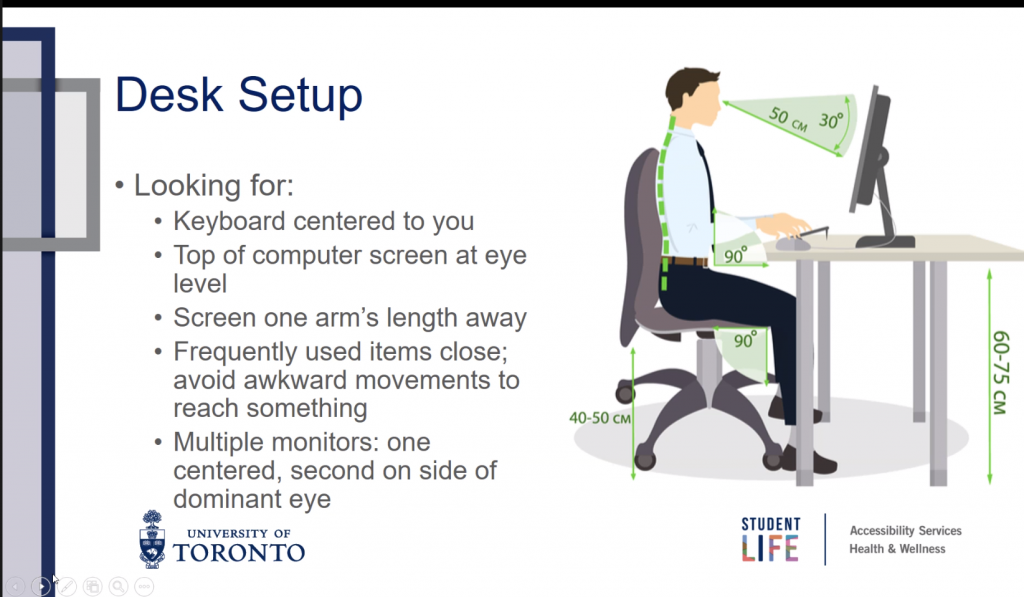
4. Avoid Working In My Bed Or On The Couch
Honestly, I prefer working on my bed. Again, it's just comfy. However, since this type of seating is soft, it places pressure on our hips and back, and causes tightness and pain. This summer, I'm setting a goal to stop working away from my desk space, to ensure that my lower muscles aren't overworking themselves.
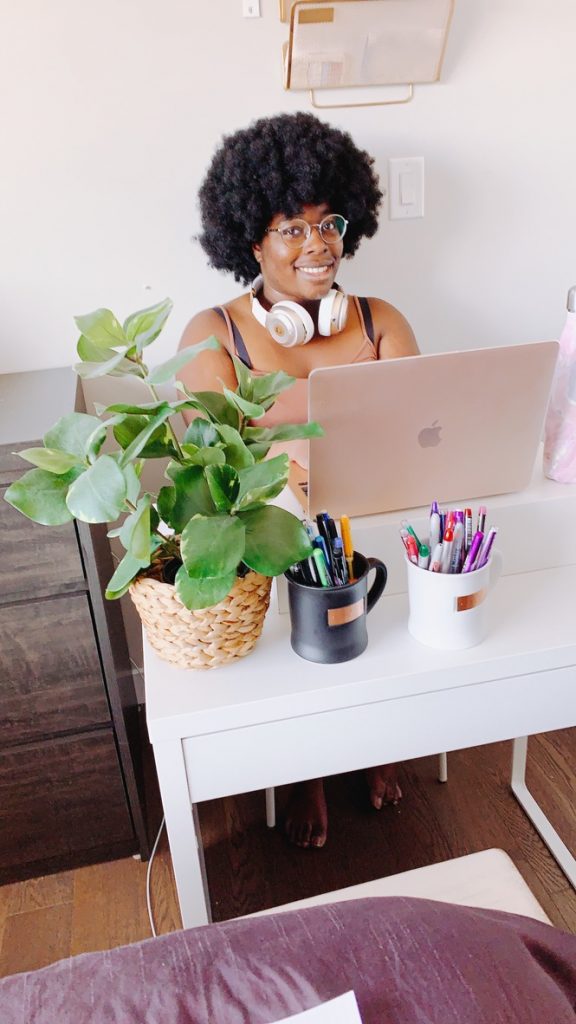
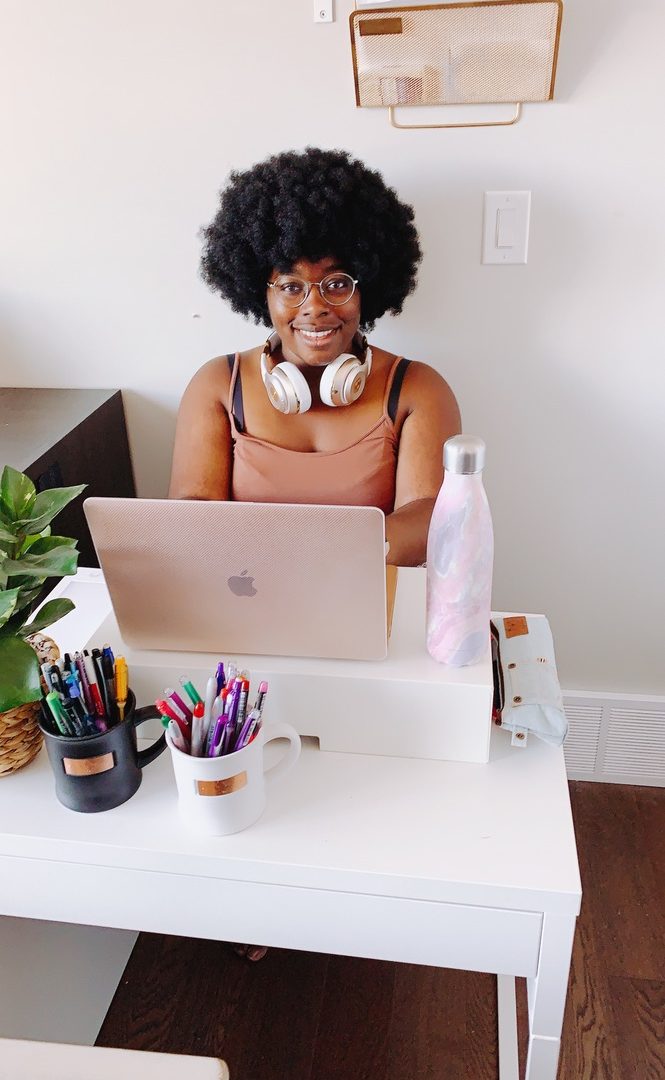
0 comments on “Ergonomics: How I Protect My Body While Working At Home”